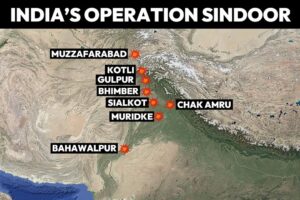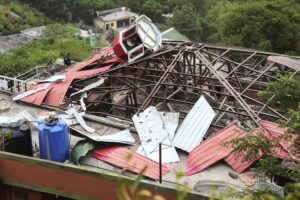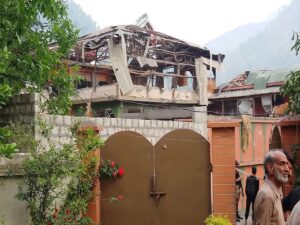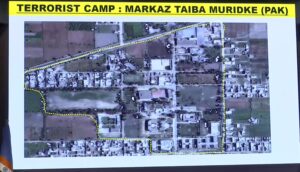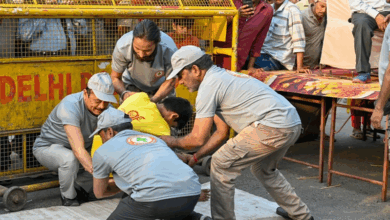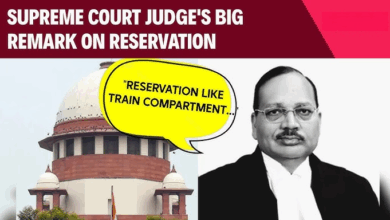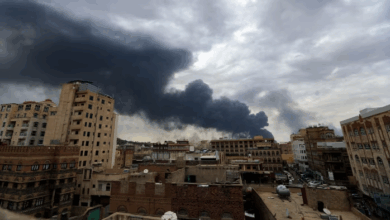India’s Operation Sindoor: Key Terror Camps in Pakistan and PoK Destroyed in Precision Strikes
News Mania Desk /7th May 2025
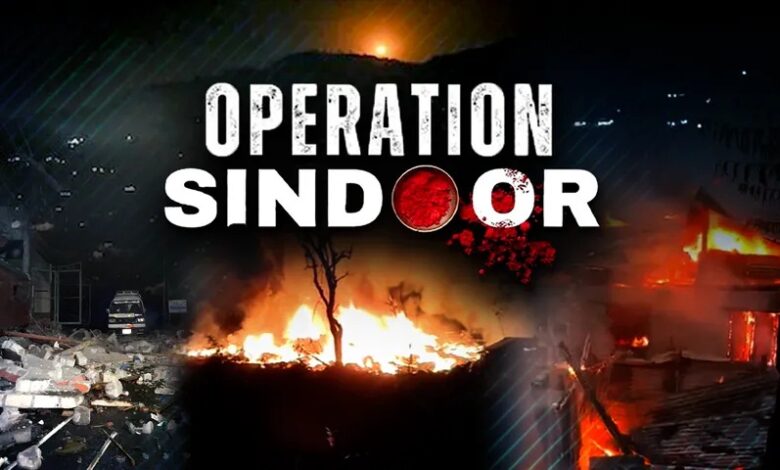
India’s IAF targeted nine terror camps in Pakistan and PoK under ‘Operation Sindoor’, including an LeT terror camp linked to the 26/11 Mumbai attack perpetrators Ajmal Kasab, David Headley, and Tahawwur Rana.
In a major counter-terrorism move, India launched Operation Sindoor, targeting key terror infrastructure in Pakistan and Pakistan-occupied Kashmir (PoK), including the training camp used by the perpetrators of the 26/11 Mumbai attacks. According to a PTI report on May 7, a total of nine terror camps were destroyed—four located in Pakistan and five in PoK—based on actionable intelligence gathered by the Indian Air Force (IAF).
These strikes come in the aftermath of the Pahalgam terrorist attack on April 22, which killed 26 people. The targets were carefully selected to dismantle infrastructure belonging to banned terrorist organisations, including Jaish-e-Mohammed (JeM), Lashkar-e-Taiba (LeT), and Hizbul Mujahideen.
Key Terror Facilities Targeted in Operation Sindoor
Among the sites destroyed were:
- JeM-affiliated camps:
- Markaz Subhan Allah in Bahawalpur – JeM’s main operational HQ where the Pulwama 2019 attack was planned.
- Sarjal at Tehra Kalan in Narowal district, Punjab – a key JeM launchpad, disguised as a Primary Health Centre, used for cross-border tunneling and drone operations. This site, just six kilometers from Jammu’s Samba sector, is run by Abdul Rauf Asgar, JeM’s de facto chief.
- Markaz Abbas in Kotli (PoK) – a major JeM training site led by Qari Zarar, with 100–125 terrorists. Zarar, wanted by India’s NIA, is a top planner of infiltrations into Poonch and Rajouri sectors.
- Markaz Syedna Bilal in Muzaffarabad (PoK) – hosts 50–100 JeM terrorists and is used for advanced training with help from Pakistan’s Special Services Group (SSG).
- LeT-affiliated camps:
- Shawai Nallah in Muzaffarabad (PoK) – a major LeT training camp, operational since 2000, used during the 26/11 Mumbai attacks. It accommodates up to 200–250 terrorists and is regularly visited by the ISI and Pakistani Army.
- Markaz Taiba in Muridke (Punjab) – the central LeT indoctrination hub, where attackers like Ajmal Kasab trained. It enrolls around 1,000 recruits in ideological and combat training programs.
- Markaz Ahle Hadith in Barnala (PoK) – another LeT facility, capable of training 100–150 cadres.
- Hizbul Mujahideen-affiliated camps:
- Makaz Raheel Shahid in Kotli (PoK) – used to train Hizbul cadres in Border Action Team (BAT) tactics and sniping.
- Mehmoona Joya in Sialkot (Punjab) – a concealed training facility within a health unit, operated by Irfan Tanda, linked to attacks in Jammu. Hosts 30 militants and is used for infiltration into the Jammu region.
How Were the Targets Chosen?
The nine sites were selected based on extensive and specific intelligence inputs. Key factors included the scale of operations, involvement in past terror attacks, and strategic significance for infiltration and indoctrination. Several of the camps served as launchpads for militants crossing into India and were regularly used for training in arms, radicalisation, and drone operations.
Each strike in Operation Sindoor was conducted with precision, marking one of India’s most significant and targeted responses against cross-border terrorism in recent years.
Background: The Pahalgam Attack
The operation was a direct response to the April 22 terrorist attack in Pahalgam, Jammu and Kashmir, where 26 civilians, including Indian and Nepali nationals, were killed. The assailants, armed with M4 carbines and AK-47s, specifically targeted Hindu tourists, separating them based on religious identity before executing them. India attributed the attack to Pakistan-based militant groups, prompting a series of air and missile strikes under Operation Sindoor
Execution of Operation Sindoor
In the early hours of May 7, the Indian Armed Forces conducted coordinated strikes on nine locations in Pakistan and Pakistan-administered Kashmir. The targets included training camps and logistical hubs associated with militant groups like Lashkar-e-Taiba and Jaish-e-Mohammed. India described the strikes as precision operations aimed at dismantling terrorist infrastructure and deterring future attacks.
The operation involved multiple branches of the Indian military and intelligence agencies. Key targets included areas in Muridke and Bahawalpur, known for housing militant group facilities. India reported the elimination of approximately 70 terrorists within 24 hours of the strikes.
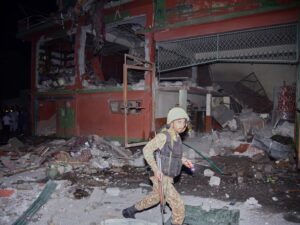
Pakistan’s Response
Pakistan condemned the strikes as an unprovoked act of aggression, reporting civilian casualties, including women and children. The Pakistani military claimed to have shot down several Indian aircraft and vowed retaliation.
Following the strikes, Pakistan shelled Indian-controlled Kashmir, resulting in civilian casualties. Both nations reported skirmishes along the Line of Control, further escalating tensions.
Edit by News Mania Desk /Source Inputs:PTI



